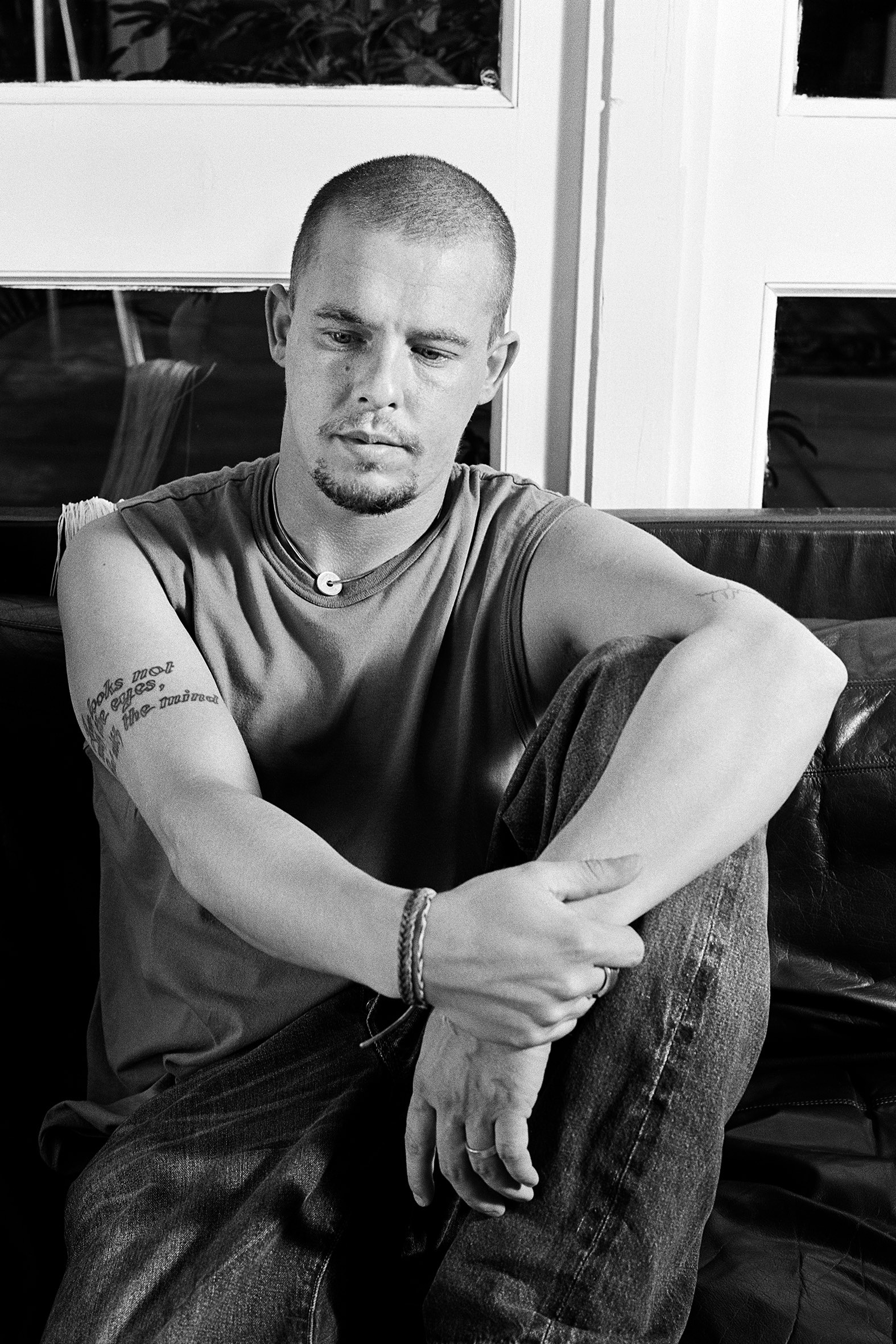Lee Alexander McQueen CBE (17 March 1969 – 11 February 2010) was an English fashion designer and couturier. He founded his own Alexander McQueen label in 1992, and was chief designer at Givenchy from 1996 to 2001. His achievements in fashion earned him four British Designer of the Year awards (1996, 1997, 2001 and 2003), as well as the CFDA's International Designer of the Year award in 2003.
McQueen had a background in tailoring before he studied fashion and embarked on a career as a designer. His MA graduation collection caught the attention of Isabella Blow, who became his patron. McQueen's early works gained him recognition as an enfant terrible in British fashion, receiving coverage with designs such as the "bumster" trousers. He became head designer for Givenchy, and in 1999 he formed a partnership with Gucci. A number of his boutiques were established in cities around the world, and his label was expanded to include perfume, fashion accessories and a line of trainers. McQueen's catwalk shows were noted for their drama and theatricality, and he was known for his finely-tailored clothes as well as imaginative and sometimes controversial designs. Among his best-known designs are the skull scarf and armadillo shoes.
McQueen took his own life in 2010, shortly after the death of his mother. He died at the age of 40, at his home in Mayfair, London.
Early Life
Alexander McQueen was born on 17 March 1969 in Lewisham, London, to Ronald and Joyce McQueen, the youngest of six children. His Scottish father worked as a taxi driver, and his mother a social science teacher. It was reported that he grew up in a council flat, but, in fact, the McQueens moved to a terraced house in Stratford in his first year. McQueen attended Carpenters Road Primary School, before going to Rokeby School. He was interested in clothes from a young age. As the youngest of six children, McQueen began experimenting with fashion by making dresses for his three sisters. His earliest fashion memory reaches back to when he was just three years old, drawing a dress on the wall of his East London family home. He was also fascinated by birds and was a member of the Young Ornithologists' Club; later, in his professional career, he often used birds as motifs in his designs.
McQueen left school aged 16 in 1985 with only one O-level in art, took a course in tailoring at Newham College and went on to serve an apprenticeship with Savile Row tailors Anderson & Sheppard, before joining Gieves & Hawkes as a pattern cutter. The skills he learned as an apprentice on Savile Row helped earn him a reputation in the fashion world as an expert in creating an impeccably tailored look. It was claimed that he sewed obscenities into the lining of suits made for Prince Charles, although a recall of suits made by Anderson & Sheppard to check found no evidence of this. While serving his apprenticeship, McQueen also attended the Rosetta Art Centre. After Saville Row, he worked briefly for the theatrical costumiers Angels and Bermans, making costumes for shows such as Les Misérables. When he was 20, he worked for Koji Tatsuno, and then Romeo Gigli in Milan before returning to London to go to Central Saint Martins College of Art and Design.

Career
In 1992, McQueen started his own label, and for a time he lived in the basement of Blow's house in Belgravia while it was under renovation. In 1993, he relocated to set up his studio in Hoxton Square, an area that also housed other new designers including Hussein Chalayan and Pauric Sweeney. His first collection after graduation, the Taxi Driver collection inspired by the Martin Scorsese's film, was organised by the British Fashion Council for young designers without runway shows, and presented on a clothes rack in a small room at the Ritz Hotel. He introduced the "bumsters" in this collection, but the collection was never photographed as all the clothes were stolen after the presentation. In his early collections, McQueen sown locks of his own hair in perspex onto the clothes to serve as his label.
McQueen's first professional runway show in 1993, the Spring/Summer 1994's Nihilism collection, was held at the Bluebird Garage in Chelsea. His early runway collections developed his reputation for controversy and shock tactics, earning him the title "l'enfant terrible" and "the hooligan of English fashion". McQueen's Nihilism collection, with some models looking bruised and bloodied in see-through clothes and extremely low-cut bumster trousers, was described by journalist Marion Hume of The Independent as "theatre of cruelty" and "a horror show".

Accomplishments
Some of McQueen's accomplishments included being one of the youngest designers to achieve the title "British Designer of the Year", which he won four times between 1996 and 2003; he was also appointed a CBE and named International Designer of the Year by the Council of Fashion Designers in 2003.
McQueen has been credited with bringing drama and extravagance to the catwalk. He used new technology and innovation to add a different twist to his shows and often shocked and surprised audiences. The silhouettes that he created have been credited for adding a sense of fantasy and rebellion to fashion.






